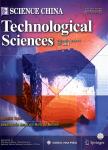Numerical study on two-phase boiling heat transfer performance of interrupted microchannel heat sinks
Numerical study on two-phase boiling heat transfer performance of interrupted microchannel heat sinks作者机构:MIIT Key Laboratory of Thermal Control of Electronic EquipmentSchool of Energy and Power EngineeringNanjing University of Science and TechnologyNanjing 210094China
出 版 物:《Science China(Technological Sciences)》 (中国科学(技术科学英文版))
年 卷 期:2022年第65卷第3期
页 面:679-692页
核心收录:
学科分类:080702[工学-热能工程] 08[工学] 0807[工学-动力工程及工程热物理]
基 金:supported by the National MCF Energy R&D Program(Grant No.2018YFE0312300) the National Natural Science Foundation of China(Grant No.51706100) the Natural Science Foundation of Jiangsu Province(Grant No.BK20180477) the Fundamental Research Funds for the Central Universities(Grant No.30918011205)
主 题:microchannel heat sink cavities and ribs thermal performance flow pattern boiling heat transfer flow disruptions
摘 要:The conventional straight microchannel heat sinks have been reported to inadequately remove the increasing power density of *** recent years,an effective heat transfer enhancement method,flow disruptions have attracted the attention of researchers,where interrupted structures are arranged in the microchannel to enhance flow mixing and heat ***,previous numerical studies of interrupted microchannel heat sinks(I MCHS)mainly focus on single-phase flow condition,and the characteristics of the boiling heat transfer of I MCHS in two-phase flow condition have been rarely ***,the flow and heat transfer characteristics of two I MCHS based on rectangular microchannel heat sink(R MCHS)are investigated by modeling both single-phase and two-phase flow *** two interrupts consist of a combination of cavities and ribs,namely elliptical cavities and elliptical side ribs(EC-ESR),and elliptical cavities and elliptical central ribs(EC-ECR).The results show that for single-phase flow condition,the maximum Nusselt number is increased by 187%in the EC-ESR design and150%in the EC-ECR design compared with the R *** subcooled boiling(i.e.,two-phase flow)condition,the EC-ECR design is a promising structure to enhance boiling heat transfer with 6.7 K reduction of average wall temperature and 29%increment of local heat transfer coefficient when compared with those of R ***,the local heat transfer coefficient in the EC-ESR design is decreased by 22%compared with the R MCHS due to the formation of a rare flow pattern(i.e.,inverted annular flow with vapor film separation)in the *** flow pattern can induce departure from nucleate boiling(DNB),thereby deteriorating the heat transfer on the channel walls.



